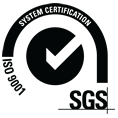Material EN Standards
ISO 14116-Material Protection against Heat and Flame (Replaces EN533)
This standard specifies performance requirements for limited flame spread material and material assemblies and protective clothing in order to reduce the possibility of the clothing burning and thereby itself constituting a hazard. Additional requirements for clothing are also specified.
EN 340- General Fit & Ergonomic Requirements for Protective Clothing
This Standard specified general performance requirements for ergonomics, innocuousness, size, designation, aging, compatibility and marking of protective clothing and the information to be supplied.
EN367-Method of determining Heat Transmission on Exposure to Flame.
This Standard specifies a method for comparing the heat transmission through materials of material assemblies used in protective clothing. Materials are ranked by calculation of a heat transfer index, which is an indication of the relative protection under the specified test conditions. The heat transfer index should not be taken as a measure of the protection time given by the tested materials under actual use conditions.
EN ISO 6942 – Evaluation of Materials and Material Assemblies when exposed to a source of Radiant Heat
This Standard specifies two complimentary methods (method A and method B) for determining the behavior of materials for heat protective clothing subjected to heat radiation. Method A serves for visual assessment of any changes in the material after the action of heat radiation. With method B the protective effect of the materials is determined. The materials may be tested either by both methods or only by one of these.
ISO 15025 – Method of test for limited Flame Spread
The Standard specifies a method for the measurement of limited flame spread properties of vertically oriented textile fabrics and industrial products in the form of single or multi-component fabrics (coated, quilted, Multi layered, sandwich constructions, and similar combinations), when subjected to a small defined flame.
EN659:2003 + A1:2008 – Protective Gloves for fighters
This standard defines minimum performance requirement and test methods for fire fighters’ protective gloves. The standard only applies to fire fighters’ protective gloves which protect the hands during normal fire fighting, including search and rescue. These gloves are not intended for deliberate handling of liquid chemicals, but provide some protection against accidental contact with chemicals. Protective gloves for special operations within firefighting service are excluded from the scope of this standard.
EN ISO 12127-1 – Clothing for protection against heat and flame – Determination of contact heat transmission through protective clothing or constituent materials.
This Standard specifies a test method for the determination of contact heat transmission. It is applicable to protective clothing (including hand protectors) and its constituent materials intended to protect against high contact temperatures.
EN 14360:2004 – Protective clothing against rain -Test Method for ready made garments -Impact from above with high energy droplets.
Protective clothing against rain, Test Method for ready made garments, Impact from above with high energy droplets.
EN 14360:2004 – Protective clothing against rain – Test Method for ready made garments-Impact from above with high energy droplets.
This Standard specifies a test method for determining the rain tightness of clothing for protection against rain, using a static manikin exposed to artificial rain. It is applicable to the testing of jackets, trousers, coats and one or two piece suits.
EN 20811:1992 – Textiles, Determination of resistance to water penetration – Hydrostatic pressure test.
This Standard specifies a hydrostatic pressure method for determining the resistance of fabrics to penetration by water. The method is primarily intended for dense fabrics, e.g. ducks, tarpaulins and tentings.
EN13506:2008 -Protective Clothing against heat and flame – Test Method for complete garments -Prediction of burn injury using an instrumented manikin
This standard provides the general principles of a test method for evaluating the performance of complete garments or protective clothing ensembles in a flash fire or other short duration exposures. This test method characterises the thermal protection provided by garments, based on the measurement of heat transfer to a full-size manikin exposed to a laboratory simulation of a fire with controlled heat flux density duration and flame distribution. The heat transfer measurements can also be used to calculate the predicted skin burn injury resulting from the exposure.






